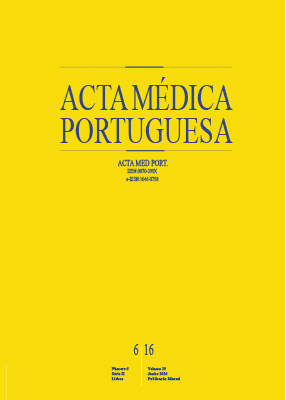Efficacy of the Vaccines Against Human Papillomavirus in Women Older than 24 Years in the Cervix Cancer Prevention
DOI:
https://doi.org/10.20344/amp.7095Keywords:
Adult, Female, Papillomavirus Infections/prevention & control, Papillomavirus Vaccines, Uterine Cervical Neoplasms/prevention & control, Vaccination.Abstract
Introduction: Cervix cancer is the fourth most common female cancer and the second most frequent in women aged 15 to 44 years. The infection by the human papillomavirus is a necessary condition in almost all of cervix cancer cases; it is a sexually transmitted disease and all women sexually active are at risk of being infected. There are currently three vaccines against human papillomavirus, and despite of the efficacy being well proven in woman aged up to 25 years, it is not well established in older ages.
Material and Methods: It was performed a literature review of the current evidence about the efficacy of the vaccines against human papillomavirus in women older than 24 years in the cervix cancer prevention, and was assessed the evidence quality by the GRADE system.
Results: Two randomized controlled trials were identified with a total of 9,571 participants – 4,792 vaccinated and 4,779 at the control group and reported data of 48 months period follow-up. The relative risk reduction was 41% (95% CI: 29 a 50%) – for the vaccinated group. There were no differences in safety and tolerability between the two groups – vaccine and control.
Conclusion: The actual evidence shows that the vaccines against human papillomavirus 16 and/or 18 in women older than 24 until 45 years have an important efficacy at reducing the risk of having persistent infection and/or to acquire cervix cancer precursor lesions.
Downloads
Downloads
Published
How to Cite
Issue
Section
License
All the articles published in the AMP are open access and comply with the requirements of funding agencies or academic institutions. The AMP is governed by the terms of the Creative Commons ‘Attribution – Non-Commercial Use - (CC-BY-NC)’ license, regarding the use by third parties.
It is the author’s responsibility to obtain approval for the reproduction of figures, tables, etc. from other publications.
Upon acceptance of an article for publication, the authors will be asked to complete the ICMJE “Copyright Liability and Copyright Sharing Statement “(http://www.actamedicaportuguesa.com/info/AMP-NormasPublicacao.pdf) and the “Declaration of Potential Conflicts of Interest” (http:// www.icmje.org/conflicts-of-interest). An e-mail will be sent to the corresponding author to acknowledge receipt of the manuscript.
After publication, the authors are authorised to make their articles available in repositories of their institutions of origin, as long as they always mention where they were published and according to the Creative Commons license.









